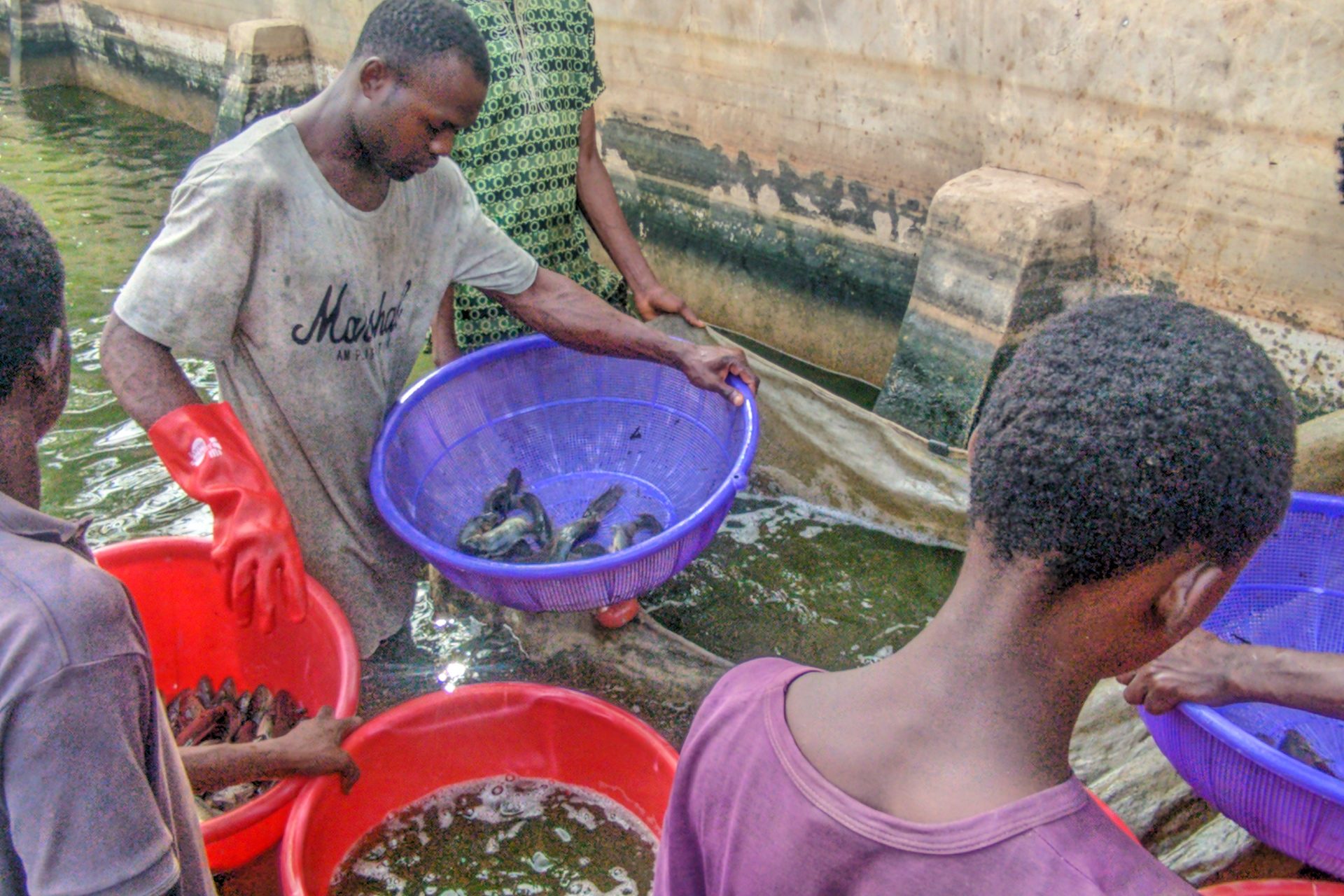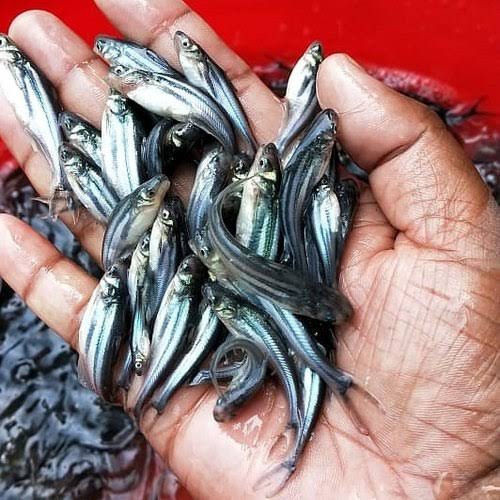
Aquaculture in Nigeria is witnessing a surge in innovative practices and diversification of species to meet the growing demand for fish and bolster food security. Among the various species under consideration, the CLIMBING PERCH (Anabas testudineus) stands out as a particularly promising candidate for aquaculture. This resilient and adaptable fish species offers several advantages that make it well-suited for farming in Nigeria’s diverse aquatic environments.
Overview of Climbing Perch
The climbing perch, Anabas testudineus popularly called Eja Iye in Nigeria, is a small sized fish that inhabits both freshwater and brackish water habitats. It is a slender fish with large scales and spines on the gill cover. The fish is hardy in nature and thrives even in oxygen-depleted waters with the help of accessory respiratory organ (labyrinthine organ) situated on the upper part of gill chamber. The fish is called climbing perch due to its ability to wander or crawl across land. Its adaptability makes the climbing perch an excellent candidate for aquaculture, especially in regions with variable water quality and limited water resources.

Climbing Perch Harvest
It grows to a maximum length of 25 cm, but commonly not seen more than 16 cm. It is a fast growing fish which attains 100g to150g in 4-5 months. The fish is much popular for good flavor and prolonged freshness even after catch. It is a preferable diet for sick and convalescent people. The flesh of the fish contains 17% protein and 13% lipid on wet weight basis. The fish also contains high iron and copper content, which are essentially required for haemoglobin synthesis.
Water quality parameters
The water quality parameters required for the farming of climbing perch are given below:
- Temperature : 20-300C
- pH : 6-8.5
- Salinity : <10 ppt
- TAN : <0.5 ppm
The wide adaptability indicated climbing perch is a potential good quality freshwater cultivated species. The geographic distribution of climbing perch is also very wide including swamps, lakes, reservoirs, canals, pools, rice fields, rivers small pits, and puddles. It is generating much interest in aquaculture production in many regions across Nigeria because of its high demand, superior flesh quality, and high market price.
In the dynamic landscape of Nigeria’s fish industry, the climbing perch (Anabas testudineus) emerges as a game changer. With its unique attributes and benefits, this resilient fish species is set to revolutionize frozen fish production in Nigeria, offering significant economic, nutritional, and environmental advantages.

Frozen Climbing Perch Pack
Key Advantages of Climbing Perch for Nigerian Aquaculture
- Hardiness and Resilience: The climbing perch can withstand harsh conditions, including low oxygen levels and poor water quality, which are common challenges in many parts of Nigeria. Its ability to breathe air allows it to survive in stagnant or polluted waters where other fish species might perish.
- Fast Growth and High Yield: Climbing perch exhibits a rapid growth rate, reaching market size within a relatively short period. This fast growth, coupled with high reproductive rates, ensures a consistent and reliable supply of fish for local markets.
- Nutritional Value: The climbing perch is rich in protein and essential nutrients, making it a valuable addition to the Nigerian diet. Its consumption can help address malnutrition and improve food security in rural and urban communities.
- Economic Viability: The adaptability and minimal requirements for survival reduce the costs associated with maintaining climbing perch farms. This makes it an economically viable option for small-scale and large-scale fish farmers alike.
- Environmental Adaptability: The climbing perch can thrive in a variety of aquatic environments, from freshwater ponds to brackish waters. This versatility allows for greater flexibility in site selection for aquaculture operations across Nigeria.

Nutritional/Health Benefits of Climbing Perch
- Among the most delicious freshwater fish
- High Flavour
- Superior flesh quality and delicious taste
- Has high medicinal value
- For disease prevention
- Anti aging properties
- Good source of protein
- Rich in omega-3 fatty acids
- Rich in iron and copper for haemoglobin synthesis
- Rich in calcium
- Rich in vitamin A,D,E & K
- Good for Sick and Convalescent people
The climbing perch presents a promising opportunity for diversifying and strengthening aquaculture in Nigeria. Its hardiness, fast growth, and nutritional benefits make it an attractive species for fish farmers looking to enhance productivity and profitability. With targeted research, market development, and support from stakeholders, the climbing perch could play a significant role in the future of Nigerian aquaculture, contributing to food security and economic development.
The climbing perch stands out as a highly advantageous species for Nigeria’s frozen fish production. Its remarkable adaptability, nutritional benefits, economic potential, and alignment with sustainable practices make it a prime candidate for advancing the country’s fish industry. Embracing the climbing perch can lead to enhanced food security, economic growth, and environmental sustainability, positioning Nigeria as a leader in the global fish market.
Get Involved
By embracing innovative aquaculture practices and exploring new species like the climbing perch, Nigeria can take significant strides toward a sustainable and prosperous future in fish farming.

